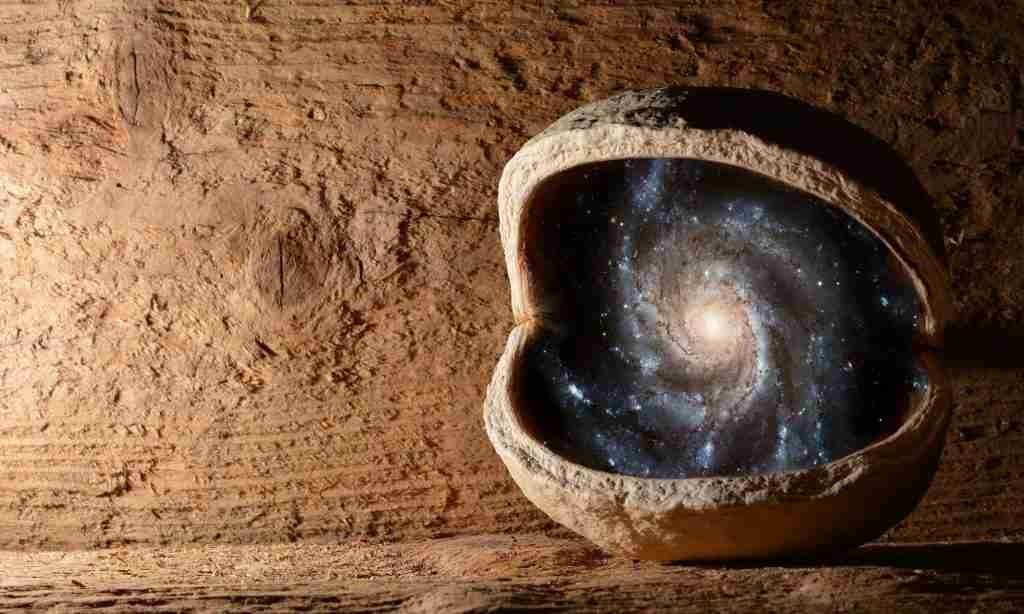Deep time is a concept that refers to the extensive temporal framework used by geologists and cosmologists to describe the age and development of the Earth and the universe. This term emphasizes the vastness of geological and cosmic processes that have occurred over billions of years, significantly surpassing human time scales. While human history is often recounted in terms of centuries or millennia, deep time encompasses eons of Earth’s evolution, from the formation of its crust to the emergence of life and beyond.
In geological contexts, deep time recognizes the slow, gradual changes that shape our planet’s landscape. Rocks, minerals, and fossils provide a timeline that illustrates the changes in the Earth’s surface, including continental drift, volcanic activity, and erosion. For instance, the geological time scale categorizes Earth’s history into epochs, eras, and periods, each marked by significant events such as mass extinctions and plate tectonic movements. By understanding deep time, scientists can comprehend the processes that have formed the planet’s diverse ecosystems and geological features over millions and even billions of years.
From a cosmic perspective, deep time extends even further, encompassing the formation and evolution of the universe itself. The Big Bang, estimated to have occurred around 13.8 billion years ago, marks the beginning of cosmic time. Following this event, galaxies, stars, and planets formed, highlighting the immense timescales involved in cosmic evolution. The interplay of astronomical phenomena, such as supernovae and black holes, illustrates the dynamic nature of the universe and its continuous transformation over vast periods.
Ultimately, deep time is a crucial framework for understanding not only the history of our planet but also the comprehensive evolution of the cosmos. Recognizing and appreciating this expansive timescale allows us to place the human experience within a larger context, underlining the grandeur and complexity of natural processes that have shaped the Earth and the universe as we know them today.
The Big Bang and the Age of the Universe
The origins of The Universe are rooted in the widely accepted Big Bang theory, a monumental scientific explanation that marks the inception of cosmic time approximately 13.8 billion years ago. This theory posits that the universe began as an infinitely hot, dense point, which subsequently expanded rapidly. This expansion, often characterized as a “big bang,” signifies not only the birth of space and time but also initiates the unfolding cosmos that we observe today.
In the moments following the Big Bang, the universe underwent a series of transformations, cooling down and allowing for the formation of subatomic particles. As the universe continued to expand, these particles began to combine, leading to the creation of simple atoms, primarily hydrogen and helium. This early phase of the universe is crucial for understanding deep time, as it set the stage for the formation of stars, galaxies, and eventually planets.
The implications of the Big Bang are profound in the context of cosmology and our comprehension of deep time. The observable universe continues to expand, as evidenced by the redshift of distant galaxies. This expansion suggests that the universe is still undergoing transformative processes, thereby challenging our understanding of the cosmic time scale. Measuring cosmic distances has become a significant aspect of modern astrophysics, reinforcing the notion of a dynamic, evolving universe.
Additionally, the age of the universe, derived through various methods including observing cosmic microwave background radiation, plays a pivotal role in framing deep time. It establishes a timeline not just for the universe’s formation but also for the emergence of life and the planet Earth itself. Understanding the Big Bang and its subsequent developments provides a foundation for exploring the vast stretches of time that have influenced the cosmos, illustrating how our existence is a mere fraction of an extensive and intricate timeline.
What’s shaking the Big Bang Model
- James Webb Space Telescope (JWST) has spotted galaxies that look too big, too mature, and too chemically rich for their age. They appear only a few hundred million years after the supposed Big Bang, which is much earlier than the standard model allows.
- Cosmic Microwave Background (CMB), long considered the “smoking gun” of the Big Bang, is being re‑examined. Some researchers argue its strength may have been overestimated, and others even question whether it’s truly primordial.
- Inflation theory (the rapid expansion right after the Big Bang) is under pressure. New models suggest the universe could have started in a different state, like a De Sitter space, where quantum fluctuations and gravity alone seeded structure.
Comparison Table
| Model | Core Idea | Why It’s Considered |
|---|---|---|
| Standard Big Bang + Inflation | Universe began ~13.8B years ago, expanded rapidly, cooled, formed galaxies | Still explains much of observed structure and expansion |
| Cyclic Universe | Expansion and contraction repeat endlessly | Avoids singularity problem, fits some large‑scale patterns |
| Quantum / Gravity‑only models | No inflation field needed; gravity + quantum ripples suffice | Simpler, testable, avoids speculative physics |
| Modified Big Bang timelines | Galaxy formation happened faster than expected | Adjusts model to fit JWST data |
The Big Bang still explains much of what we see, but its timeline, evidence, and assumptions are under heavy fire. The debate now is whether to patch the model – or replace it with something leaner and more consistent with JWST and quantum gravity.
The Formation of Earth: A Deep Time Perspective
The history of The Earth is a remarkable narrative that spans approximately 4.54 billion years, a timeframe that challenges human comprehension due to its immense scale. The formation of our planet began with the solar system’s genesis, culminating from the gravitational attraction of dust and gas within a primordial solar nebula. As particles coalesced, they gradually formed larger celestial bodies, including Earth.
Initially, the young Earth exhibited extreme conditions; it was a molten landscape characterized by intense volcanic activity and frequent collisions with other celestial bodies. As it cooled, the formation of a solid crust marked the beginning of a more stable environment. This critical early period facilitated the development of the atmosphere and oceans, setting the stage for the eventual emergence of life. The geochemical processes that took place contributed enormously to Earth’s evolution, demonstrating a profound interplay between various natural phenomena over deep time.
Understanding these geological processes is essential for grasping the concept of deep time. Throughout the planet’s history, tectonic shifts, erosion, volcanic eruptions, and sedimentation have continually reshaped its surface, creating the diverse landscapes seen today. Each layer of rock preserved in the Earth’s crust serves as a record of past events, providing insights into climatic changes, biological evolution, and even the impact of celestial events on Earth’s system.
By studying these geological features through the lens of deep time, researchers can reconstruct Earth’s history and appreciate the complexity of its development. This perspective not only emphasizes the prolonged nature of geological processes but also highlights how interconnected these processes are with the broader cosmic timeline. Consequently, the Earth is not just an isolated entity but intricately linked to the vast universe, a testament to the profound history encapsulated in deep time.
The Importance of Deep Time in Science
Deep time refers to the vast temporal framework that encompasses the history of the Earth and the universe, stretching over billions of years. Understanding deep time is pivotal in various scientific disciplines, particularly in geology, paleontology, and astronomy. It provides scientists with a critical lens through which to interpret the complex processes that have shaped our planet and its life forms.
In geology, the concept of deep time enables researchers to comprehend the gradual processes that have led to the formation of mountains, valleys, and other geological features. The theory of plate tectonics, for example, necessitates an understanding of geological time scales that span millions of years, allowing scientists to see how tectonic plates have shifted and evolved over eons. This long-term view is fundamental to mapping the Earth’s geological history, revealing patterns of change that can inform predictions about future geological activity.
Paleontology benefits equally from the notion of deep time. Fossil records, which provide insights into the evolution of species, can only be reliably interpreted when placed in the context of an extensive time scale. This perspective helps scientists understand extinction events, evolutionary trends, and the rise and fall of biodiversity throughout Earth’s history. By analyzing fossils dating back millions of years, paleontologists can reconstruct ancient ecosystems, contributing to our knowledge of life on Earth.
Astronomy, while studying the universe’s history and its cosmic evolution, also hinges on concepts related to deep time. Understanding the age of stars, galaxies, and celestial phenomena requires a grasp of time scales that far exceed human experience. As scientists explore the cosmos, they rely on deep time to piece together the story of the universe, from its formation in the Big Bang to the present moment.
Therefore, deep time is essential across scientific disciplines as it provides the temporal framework essential for interpreting Earth’s history, the evolution of life, and the unfolding narrative of the universe. By situating discoveries within billions of years, scientists can connect geological changes, evolutionary patterns and cosmic processes into a coherent story. This perspective bridges human timescales with planetary and cosmic ones – showing how continents form, species diversify and stars evolve. Deep time is not only a scientific tool but a framework that grounds knowledge in the immense temporal expanse of reality.
What’s More
The posts in My Blog feature reflective, story-driven pieces rooted in personal and societal insights.
The topics in My Interests explore abstract, philosophical ideas and their cultural and societal impact.
👁️ 9,394 Views

















